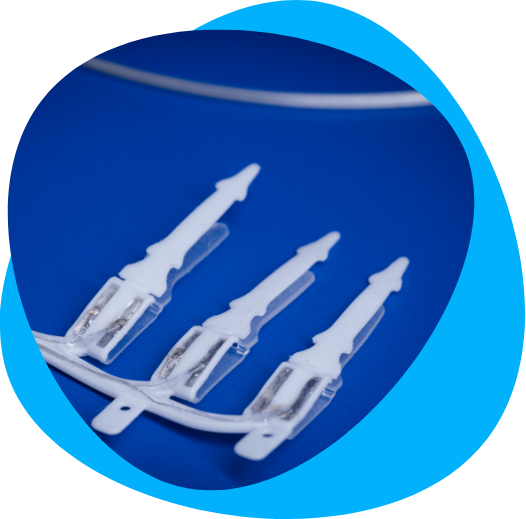Inflammatory bowel disease
In IBD there may be tiredness, fever, or loss of appetite.
Gut symptoms may include:
- Frequent, loose stools which may also contain blood and/or mucus
- Urgent need to pass stools
- Constipation
- Nausea/vomiting
- Abdominal bloating/pain
- Anal fissure
- Abscess formation (a collection of pus)
- Bowel stricture (narrowing)
- Fistula formation (a narrow tunnel grows between organs).
Sometimes skin, eye or joint problems can occur.
The causes of IBD are not completely understood, but there seems to be a complex interplay between genetics, environment, gut bacteria, and the immune system [2,4].
IBD is diagnosed after a thorough medical history, physical examination, and appropriate tests, as shown in Table 1.
TABLE 1
Commonly used tests
| Stool tests |
|
|---|---|
| Blood tests |
|
| Endoscopy |
|
| Capsule endoscopy |
|
| Imaging tests |
|
In IBD there may be tiredness, fever, or loss of appetite.
Treatment aims at inducing remission and maintenance therapy to avoid flare ups [5] and can include a dietary assessment to ensure:
- Intake of sufficient energy and nutrients
- Identification and avoidance of food triggers
- Symptom reduction [6]
Long term medication is needed by most patients with Crohn’s disease, and many with ulcerative colitis. The type of medication can depend on condition and severity. However, treatments may also cause problems, such as:
- Some medications need to be given by injection or infusion.
- As well as side effects, some medications can cause more serious adverse effects such as higher infection rate, liver toxicity, skin reactions, bone thinning and cancer.
- Need for extra vaccinations.
Unfortunately, 75% of people with Crohn’s undergo surgery if symptoms are drug-resistant or there are complications. Unlike ulcerative colitis, where surgery can be curative, Crohn’s disease often recurs after surgery [6].
Mental health issues should be addressed as they can affect IBD [7].
Stopping smoking is important as it increases the risk of Crohn’s disease and its complications. The relationship of nicotine and ulcerative colitis is more complex [8].
New treatment under development at the Bionics Institute
Bionics Institute researchers are developing an electrical medical device that aims to improve long-term outcomes for people with IBD.
How does it work?
• A tiny electrode array is attached to the vagus nerve just under the diaphragm
• The vagus nerve connects the brain to the gut and controls natural anti-inflammatory processes in the body
• The vagus nerve is stimulated by the electrode array in response to gut inflammation caused by Crohn’s disease
• The vagus nerve initiates a natural anti-inflammatory response to reduce the symptoms of Crohn’s disease
• The electrode array is powered by a small battery implanted at hip level.
• The battery only needs to be replaced every 10 years ensuring the device provides a set-and-forget treatment
• The treatment causes fewer side effects than medications
This device is safe and has been approved for use in clinical trials.
With your help, we can accelerate the evolution of this device, improving the lives of those with Crohn’s disease.
Medical disclaimer
This article contains general information relating to a medical condition. Such information is provided for informational purposes only and does not replace medical advice given by your healthcare professional.
References
1. Busingye D, Pollack A, Chidwick K. Prevalence of inflammatory bowel disease in the Australian general practice population: A cross-sectional study. (CC BY 4.0). PLoS One [Internet]. 2021 May 1 [cited 2022 Feb 4];16(5):e0252458. Available from: https://journals.plos.org/plosone/article?id=10.1371/journal.pone.0252458
2. Alatab S, Sepanlou SG, Ikuta K, Vahedi H, Bisignano C, Safiri S, et al. The global, regional, and national burden of inflammatory bowel disease in 195 countries and territories, 1990–2017: a systematic analysis for the Global Burden of Disease Study 2017. Lancet Gastroenterol Hepatol [Internet]. 2020 Jan 1 [cited 2022 Feb 3];5(1):17–30. Available from: http://www.thelancet.com/article/S2468125319303334/fulltext
3. Australian Government D of H. Inflammatory Bowel Disease National Action Plan 2019. (CC BY 4.0) [Material adapted] [Internet]. 2019 [cited 2022 Feb 3]. Available from: https://www.health.gov.au/sites/default/files/documents/2019/09/national-strategic-action-plan-for-inflammatory-bowel-disease-inflammatory-bowel-disease-national-action-plan-2019_0.pdf
4. Loddo I, Romano C. Inflammatory bowel disease: Genetics, epigenetics, and pathogenesis. Front Immunol [Internet]. 2015 [cited 2022 Feb 3];6(NOV). Available from: /labs/pmc/articles/PMC4629465/
5. De Simone B, Davies J, Chouillard E, Saverio S Di, Hoentjen F, Tarasconi A, et al. WSES-AAST guidelines: management of inflammatory bowel disease in the emergency setting. (CC BY 4.0). World J Emerg Surg [Internet]. 2021 [cited 2022 Feb 4];16(23):1–27. Available from: https://doi.org/10.1186/s13017-021-00362-3
6. Bernstein CN, Eliakim A, Fedail S, Fried M, Gearry R, Goh KL, et al. Inflammatory Bowel Disease: Update August 2015. World Gastroenterology Organisation Global Guidelines. 2016. p. 1–36.
7. Hu S, Chen Y, Chen Y, Wang C. Depression and Anxiety Disorders in Patients With Inflammatory Bowel Disease. CC BY. Front Psychiatry. 2021 Oct 8;12:1643.
8. Berkowitz L, Schultz BM, Salazar GA, Pardo-Roa C, Sebastián VP, Álvarez-Lobos MM, et al. Impact of cigarette smoking on the gastrointestinal tract inflammation: Opposing effects in Crohn’s disease and ulcerative colitis. (CC BY). Front Immunol. 2018 Jan 30;9(JAN):1–10.



